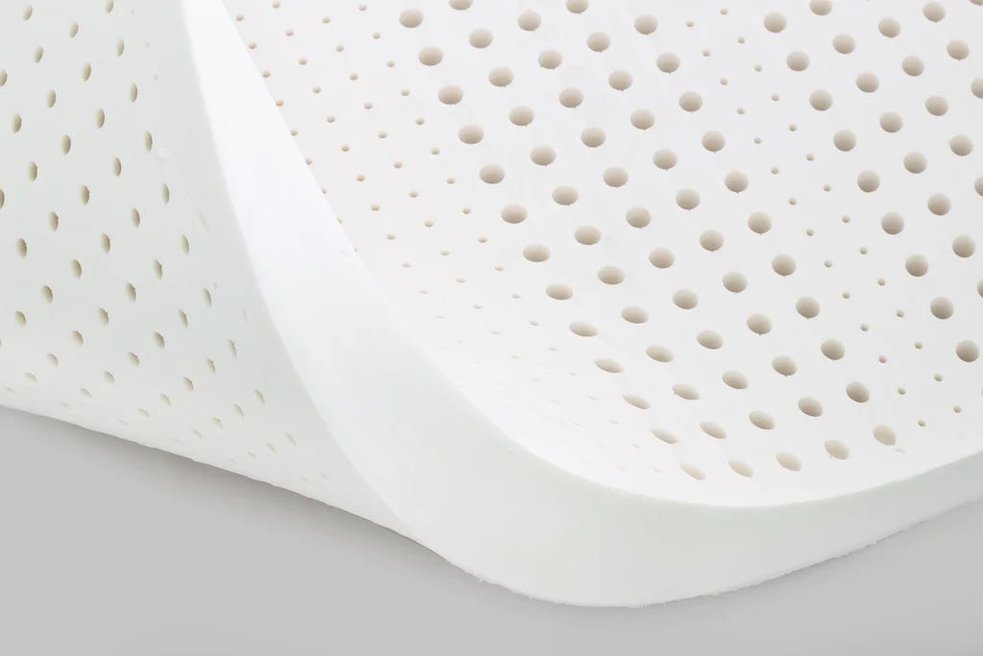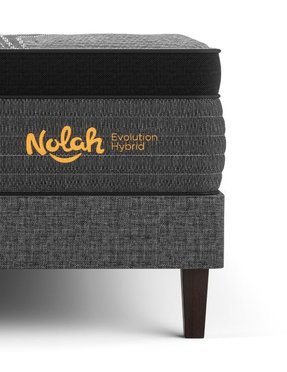The Best Cooling Mattress for Hot Sleepers
How to Find a Mattress That Offers Cooling Relief
When you crawl into bed after a long day, you want to feel comfortable and cozy—but not hot. You also want to wake up feeling refreshed, not stuck to your bedsheets and swimming in your own sweat.
Thankfully, your temperature naturally drops when you sleep, and excess heat leaves the body. However, with the wrong mattress and bedding, that heat has nowhere to go. Instead of dispersing into the air around you, it gets trapped beneath the covers and within your mattress, making you even hotter and sweatier.
To counteract this natural occurrence, you need a bed and bedding designed to dispel heat and moisture, leaving you cool and dry so you can fall asleep comfortably. In this guide, we'll discuss what a cooling mattress is and how to find one that suits all your sleep needs.
Want to learn about bedding that's breathable and moisture-wicking? Check out our guide to the Best Cooling Sheets for Hot Sleepers.
Why Do I Get Hot at Night?
Before you head to a mattress store or start browsing online for a cooling mattress, you should try to identify why you tend to sleep hot. The problem could be your mattress and bedding, but it could also be a sign of a health condition that needs your attention. In the case of the latter, buying a cooling mattress can provide some relief, but you'll still need to treat the underlying condition to get more comfortable sleep.
As mentioned above, the human body naturally drops in temperature during sleep. It may sound counterintuitive, but this temperature drop is actually what causes a lot of people to "sleep hot." If your mattress and bed sheets trap the excess heat, it creates a humid environment under the covers. This causes the body to sweat to try and cool itself down, which creates even more heat and moisture, creating a cycle of discomfort.
Night sweats and sleeping hot can also be side effects of a medication, sleep apnea, infection or illness, various medical conditions, and hormonal changes during pre-menstruation, pregnancy, and menopause. If you suspect a health condition is the cause of your discomfort, talk to your doctor about identifying and treating the root cause.
Aside from bodily causes, you may sleep hot and sweat at night because of your environment. Research suggests that 65 degrees Fahrenheit is the ideal room temperature for sleep, give or take a few degrees. If you sleep with the thermostat set higher than that, your body has to work harder to stay cool as you sleep.
Lastly, the materials you surround yourself with while you sleep can trap heat if they don't have a breathable design. Your sleepwear, bedding, and mattress should all work with your body's natural cooling process, not against it by locking in warmth and moisture.
If your mattress and bed sheets trap the excess heat, it creates a humid environment under the covers. This causes the body to sweat to try and cool itself down.
What to Look for in a Cooling Mattress
With an understanding of what natural processes and environmental conditions make you sleep hot and sweat, you can identify the characteristics that all the best cooling mattresses have in common.
Most importantly, a cooling mattress must use temperature-neutral materials that dissipate heat and must be breathable to allow for air circulation. We'll explore these properties further as we discuss the most common mattress materials and how they stack up in terms of cooling capabilities.
What Type of Mattress is Best for Hot Sleepers?
When shopping for a cooling mattress, it helps to choose which type of mattress you want first and then compare brands and models within that category. Let's go over the four main mattress types: innerspring, foam, latex, and hybrids.
Are Innerspring Mattresses Good for Hot Sleepers?
Traditional innerspring mattresses can't compete with foam and latex models in the pressure relief and contouring departments. But when it comes to cooling, they can do a decent job—depending on the construction.
Innerspring mattresses built with individually-wrapped coils allow for ample airflow. The space in between the springs allows for free circulation, keeping the support layer of the mattress cool and preventing humidity build-up.
However, coil mattresses use a wide range of materials for their top layer. If the comfort layer—the part of the mattress that comes in closest contact with the body—isn't made with breathable or temperature-neutral materials, it will trap heat. If you do opt for an innerspring mattress, make sure all of the fabrics and fillings used on top are breathable and don't retain moisture.
Are Foam Mattresses Good for Hot Sleepers?
Unfortunately, foam mattresses have a bad reputation for heat retention. That’s because many low-end models use dense foams with excessive chemical additives that trap heat. But that’s not the case for all foam mattresses. High-quality foam mattresses use more breathable foams for air circulation and often have additional features like cool-touch fiber covers or cooling infusions like copper or gel. As long as you know what to look for, you’ll have no trouble finding a foam mattress that sleeps comfortably cool.
Are Latex Mattresses Good for Hot Sleepers?
Hot sleepers considering a latex mattress should know that synthetic latex and natural latex have very different properties when it comes to temperature control. While naturally-sourced latex is temperature neutral and sleeps cool, synthetic latex often contains temperature-sensitive fillers that store heat.
Natural latex is a solid option for hot sleepers. Latex foam feels flexible and bouncy, offering gentle contouring without heat-trapping chemical additives. To produce latex mattresses, manufacturers start by whipping the sappy latex liquid into a frothy foam. This process makes the foam highly breathable, which keeps latex mattresses well ventilated.
While browsing your options, you'll see some latex beds made with Talalay latex and others with Dunlop latex, the two types of natural latex. Both are great choices for hot sleepers, though Talalay latex is slightly more breathable. If you want to learn about latex types, head over to our Latex Mattress Shopping Guide. As shown below, some latex mattresses also use perforated foam, which further improves air circulation.

Are Hybrid Mattresses Good for Hot Sleepers?
Hybrid mattresses combine an innerspring base with one or more layers of foam or latex. As with stand-alone innerspring mattresses, the open construction of a hybrid mattress's coil system offers easy air circulation, keeping the base layer cool.
The material used for the mattress's remaining layers is what determines hybrid mattresses apart in their cooling capabilities. As previously mentioned, you should opt for a breathable foam option for the best cooling qualities.
Additional Tips for Shopping Cooling Mattresses
Hopefully, this in-depth look at mattress materials has helped you narrow down your search for a cooling mattress. Aside from choosing the type of mattress you plan to buy, you should consider a few other differentiating factors. As you compare your options, keep these tips in mind:
- Many mattresses come wrapped in a cover to keep out germs and liquid. Hot sleepers should make sure the cover uses a breathable, moisture-wicking material such as organic cotton.
- Switching to a cooling mattress won't eliminate night sweats and sleeping hot if you still use heat-trapping bedding. For maximum relief, make sure you buy cooling sheets along with your new mattress.
Especially if you shop online, reading mattress reviews before you buy is crucial. For your shopping convenience, Sleep Foundation and other similar review sites publish annual roundups that specifically focus on the best cooling mattresses.
- Aside from reading customer reviews, sensitive hot sleepers should look for a mattress with an at-home sleep trial. That way, you can return the mattress at no cost to you if it doesn't meet your temperature-control expectations.
If the cooling mattress you want is out of your price range, that doesn't mean you can't enjoy cooling relief. Many mattress brands sell mattress toppers made with the same materials as their beds. For example, the Nolah Mattress Topper uses the same breathable AirFoam™ as our mattresses.
Sleep Cool Year-Round
Nothing beats climbing into a cool and comfortable bed, snuggling with your pillows or blankets, and drifting off to sleep. But for too many people, their own heat makes this impossible, even in the winter.
For restorative sleep, you need a mattress that sleeps consistently despite the temperature outside and works alongside your body's natural cooling system. Fortunately, hot sleepers have plenty of cooling mattress options—you just need to know what to look for.
Disclaimer: Nolah does not provide medical advice. All resources on the Nolah blog, including this article, are informational only and do not replace professional medical counsel. Talk to your doctor about any health, mental health, or sleep-related issues.
You May Also Like These Articles
Don't Sleep on Exclusive Offers
Sign up for our newsletter, and you'll be the first to know about discounts, deals, and what's new at Nolah.
Ready for Bed?
